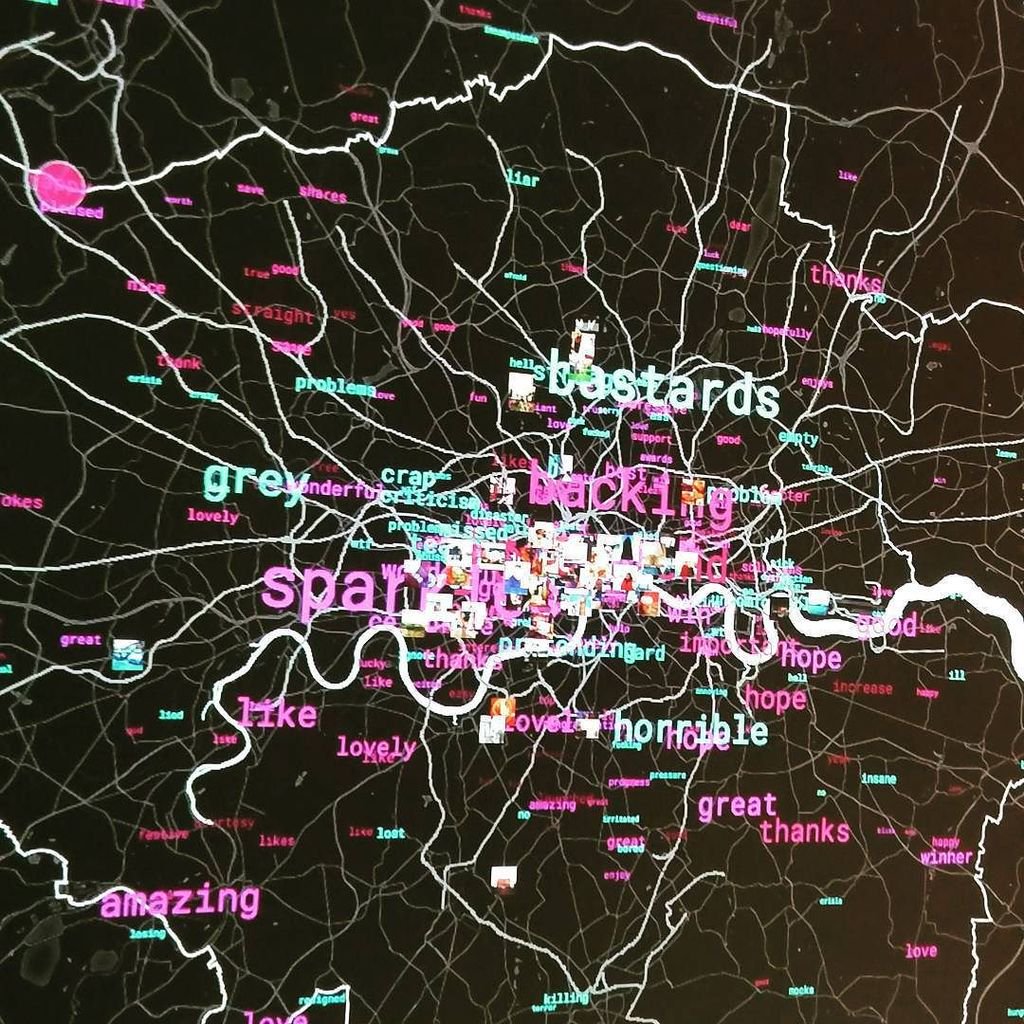The topic of ‘Digital Cities’ encompasses many things ubiquitous in our daily lives – traffic surveillance cameras, which bus to take and what time the post office closes via GoogleMaps, checking the weather on your iPhone every five minutes to decide on taking an umbrella.
But the intricacy of connectivity and the constant sharing and availability of hundreds of other types of content, provided by us, the citizens, can make our Digital Cities not only more complete and complex but also more helpful – and not just in terms of timetables and rainy days.
Take Umbrellium’s piece present at the Big Bang Data exhibition, for example. Essentially a live, interactive, annotated map drawing on the growing theme of the “Internet of Things”, the aptly named “Thingful” gathers and displays information collected and shared by devices all over the world. To anyone looking at “Thingful”, these readings provide an array of readily-available data including energy and radiation readings, localised and updated weather conditions, air quality devices “as well as seismographs, iBeacons, ships, aircraft and even animal trackers”.

Thingful | Showing an active weather station in Salisbury. More accurate than the Apple weather app?
Here we start to have an emerging theme central to the Digital City: the existence of an ‘interactive, networked databased’ (drawing loosely on Miller’s themes of the technical processes of digital media). In the digital city of today, it is the citizen that provides information (and possibly guidance) to others via interaction and subsequent contribution to these ‘databases’. These databases have “little no meaning on their own (…), but have the potential to be related to other bits of information or objects and thus together can obtain a layer of meaning” (Miller, 2001).

“bastards” “crap” up North, “amazing” “great” “thanks” down South; surely a sign that not all boroughs are made the same
The most interesting example is Tekja’s “London Data Stream”, where ‘tweets’ and other information posted in real time by citizens to their own public social network accounts allows for a creation of a ‘happiness map’ of London – where and when are people the happiest, and why? Through Miller’s technical processes of digital media, several ‘interactive networked databases’ are created, allowing citizens to have a greater understanding of not only their city, but themselves, helping them make better decisions for the future.
It is ultimately the information gathered via Umbrellium and Tekja’s projects that would guide the visitor to make the best possible decisions for the City of London in the “London 2036” city management simulator created by Future Cities Catapult. Armed with knowledge about our cities that goes beyond where to switch lines in the underground, we can ultimately make – or, in the case of the “London 2036” project, attempt to make – the right decisions for our happiness as individuals, as active citizens and as a society. Now that we know how people feel about the amount of green space in Lewisham and the air quality in Hackney, we can finally start to do something about it.
Bibliography:
Who controls our data? Usman Haque debates the implications of the data explosion,
Introducing the London Situation Room, 1 December 2015 [ Article ]
Tekja: London Data Findings, 19 January 2016 [ Article ]
Q&A with mySociety – how do you use data for the common good?, March 7, 2016 [ Article ]
How Can Data Improve Our Health?, 7 January 2016 [ Article ]
Thingful, Website < http://thingful.net >
Miller, V. (2011) Understanding Digital Culture. In: Miller, V. Key Elements of Digital Media. Sage: pp 12-21

